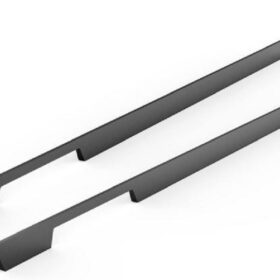Curtain Wall Aluminum Sections- A Comprehensive Guide
Curtain Wall Aluminum Sections: A Comprehensive Guide is an invaluable resource for architects, engineers, and construction professionals seeking a thorough understanding of curtain wall aluminum sections. This comprehensive guide provides detailed information on the design, fabrication, installation, and maintenance of these architectural elements.
Aluminum in Curtain Walls
Aluminum is an ideal material for curtain walls due to its lightweight, high strength-to-weight ratio, corrosion resistance, and adaptability. Aluminum sections can be customized to meet specific design requirements, from structural support to thermal performance.
Types of Curtain Wall Aluminum Sections
Curtain wall aluminum sections are typically classified into two main types:
Vertical Mullions: These sections provide structural support and division between adjacent panels.
Horizontal Frames: These sections connect the vertical mullions and support the infill panels.
Each type of section has various profiles and dimensions, allowing for a wide range of aesthetic and functional options.
Design Considerations
The design of curtain wall aluminum sections involves several key considerations:
Structural Integrity
Sections must be designed to withstand wind loads, dead loads, and thermal expansion. Proper sizing and reinforcement ensure structural stability and prevent premature failure.
Weather Resistance
Sections must be weather-resistant to prevent water penetration, air infiltration, and thermal bridging. Thermal breaks, gaskets, and sealants are commonly used to improve weatherproofing.
Fire Resistance
Curtain wall sections can be fire-rated by incorporating intumescent strips or other fire-resistant materials that expand in the event of a fire, protecting the building occupants and contents.
Fabrication and Installation
The fabrication and installation of curtain wall aluminum sections require specialized equipment and techniques:
Fabrication
Sections are typically fabricated from extruded aluminum profiles. Precision cutting, drilling, and assembly ensure proper fit and alignment.
Installation
Installation involves securing the sections to the building frame and installing the infill panels. Brackets, bolts, and gaskets are used to facilitate secure and weathertight connections.
Maintenance and Inspection
Proper maintenance and inspection are crucial to ensure the longevity and performance of curtain wall aluminum sections:
Regular Inspection
Periodic inspections should be conducted to identify potential issues, such as corrosion, sealant failure, or structural damage.
Cleaning
Regular cleaning helps maintain the appearance and prevent dirt and debris buildup from affecting the weatherproofing performance.
Repair and Replacement
Damaged or deteriorated sections should be repaired or replaced promptly to prevent further deterioration and ensure structural integrity.
In conclusion, Curtain Wall Aluminum Sections: A Comprehensive Guide provides a comprehensive understanding of these architectural elements, from design and fabrication to installation and maintenance. By following the principles outlined in this guide, professionals can ensure the successful implementation and longevity of curtain wall aluminum sections in various building applications.
-
2024-09-14Exploring the Different Types of Modern Closet Door Pulls and Their Applications
-
2024-09-14How Cabinet Door Pull Handles Support High-Traffic Areas
-
2024-09-06Cost-Benefit Analysis of Investing in High-Quality Long Wardrobe Door Handles
-
2024-09-04How Flat Cabinet Handles Enhance Modern Interior Design
-
2024-11-29Top Trends in Modern Kitchen Cabinet Pulls for 2024
-
2024-11-28The Ultimate Guide to Modern Kitchen Cabinet Pulls- Materials, Styles, and Tips
-
2024-11-27Elevate Your Kitchen Design with These Must-Have Modern Cabinet Pulls
-
2024-11-26Sleek and Stylish- The Best Modern Kitchen Cabinet Pulls for a Contemporary Look






